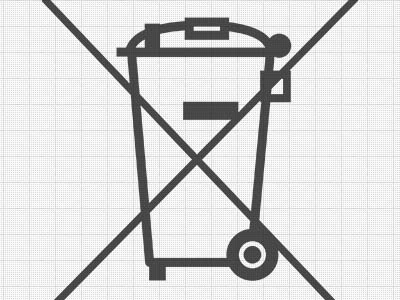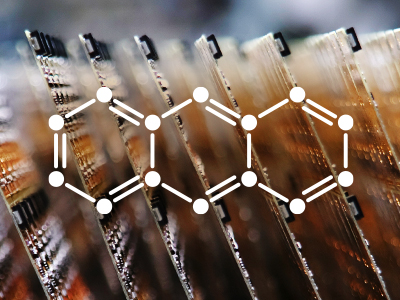To comply with WEEE regulations, producers must join a Producer Compliance Scheme, which provides a link between producers and environmental agencies as well as a number of services, which enable waste electrical and electronic equipment (WEEE) to be effectively and economically recycled or reused. New electrical and electronic equipment placed on the market must be marked with certain information to allow for correct disposal by the end user. Information must also be made available to treatment facilities so that new products can be efficiently reprocessed.
WEEE Marking

The symbol adopted by the European Council to represent waste electrical and electronic equipment comprises a crossed-out wheelie bin with or without a single black line underneath the symbol. The black line indicates that goods have been placed on the market after 2005 when the Directive came into force. Goods without the black line were manufactured between 2002 and 2005. In such instances, these are treated as “historic WEEE” and fall outside reimbursement via producer compliance schemes.
The symbol indicates that the product should not be discarded as unsorted waste but must be sent to separate collection facilities for recovery and recycling. To comply with WEEE regulations, the WEEE marking must appear on any electrical and electronic equipment placed on the EU market.
WEEE labels are mandatory for the product categories like temperature exchange equipment, such as refrigerators and air-conditioning units, screens, monitors, and equipment containing screens having a surface greater than 100 cm².
Information to End Users and Customers
According to the timelines and requirements of European Union member state WEEE Legislation, the following information should be provided to the end user:
“The symbol on the product or its packaging indicates that this product must not be disposed of with your other household waste. Instead, it is your responsibility to dispose of your waste equipment by arranging to return it to a designated collection point for the recycling of your waste electrical and electronic equipment.
By separating and recycling your waste equipment at the time of disposal you will help to conserve natural resources and ensure that the equipment is recycled in a manner that protects human health and the environment. For more information about where you can drop off your waste for recycling, please contact your local authority.”
WEEE Registration
The WEEE number is a manufacturer number that is assigned to the first distributors of electrical and electronic equipment. It consists of a country code and an 8-digit sequence of numbers (e.g. “WEEE Reg. No. DE 12345678”). The registration process includes registering with a WEEE Producer Compliance Scheme (PCS) or the Environment Agency directly.
Producers are expected to pay an annual registration fee to the appropriate agency. Producers or WEEE compliance schemes acting on their behalf are required to report data annually on the amount of EEE which they put onto the market. Registrants are also responsible for organizing and/or financing the collection, treatment, recycling, and recovery of WEEE, and providing specific information to recycling companies.
Treatment
Companies are required to confirm that the treatment and recycling of WEEE done on behalf of their company will be carried out in accordance with the requirements of the WEEE Directive. These requirements are set out in legislation passed by member states, including requirements respecting special treatment for specified parts and overall recovery rates achieved.
Compliance and Take-back Scheme (CTBS)
From January 2021, large retailers will be obliged to take back WEEE when a consumer buys a new, similar piece of equipment. In line with the current WEEE regulations, the retailer is required to provide this service to everyone for free, regardless of whether they’ve bought anything from their store. In most EU member states, Compliance and Take-back Schemes (CTBS) have been established to provide compliance services to the producers.
Responsibility and Disposal under WEEE Compliance Scheme
The producer’s compliance scheme is responsible for their WEEE. The original producer can give the information on the take-back system availability so that their EEE suppliers and retailers can dispose of business WEEE, but they may charge for this service.
Under the WEEE system, householders have a duty to dispose of their electrical waste properly. If an item of electrical or electronic equipment has a crossed-out wheelie bin symbol on it, users should not dispose of it in the trash, but instead, take it to the nearest household waste recycling or civic amenity center.
Conclusion
End users are ultimately responsible for the proper disposal of electrical and electronic equipment when it reaches the end of its useful life. Under the WEEE Directive, producers must take several steps to make this responsibility clear and simple. Working together, producers and end users can help conserve natural resources and divert e-waste from landfills.




